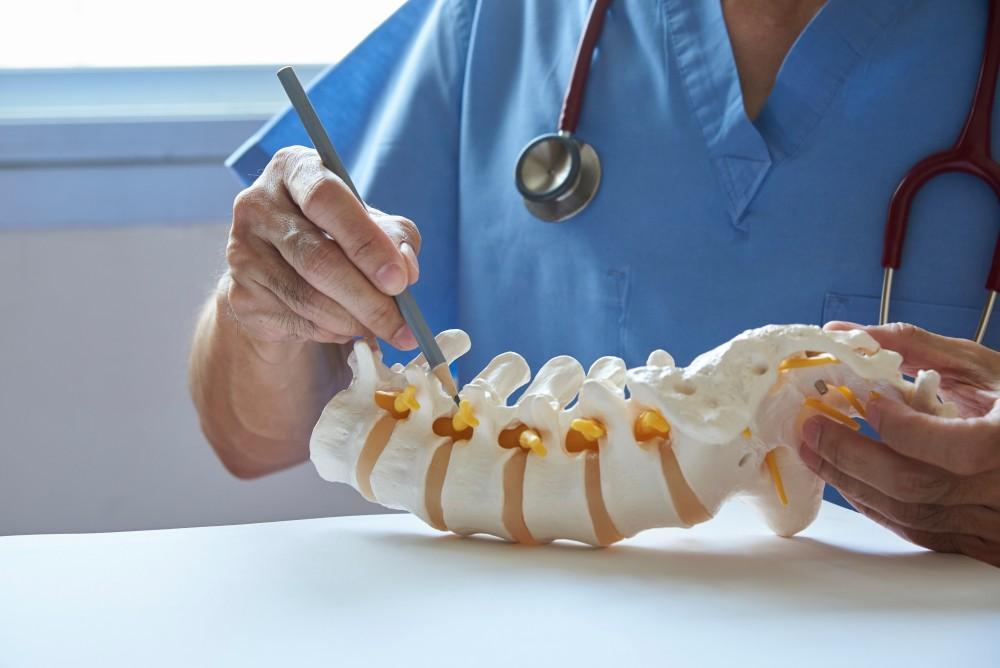
How Can Spinal Stenosis Surgery Change a Patient's Life?

Your spine contains 24 interlocking bony vertebrae, each separated by an intervertebral disc that prevents the bones from rubbing together and cushions the shock of movement. The stack contains a hollow tube down the center, through which runs the spinal cord, associated nerves, and peripheral nerves that exit the canal and head to the extremities.
Spinal stenosis is a condition where one or more parts of the tube narrow, reducing the amount of space for the nerves. Without enough space, the nerve roots in that region may become “pinched,” leading to radiating pain, numbness and/or weakness, and tingling along the nerve’s path.
A great example of a pinched nerve root is sciatica, where the sciatic nerve in the lower back becomes compressed as it exits the spine between the L4-L5 and/or L5-S1 vertebrae. The pain travels from the back into the buttocks and down the outside of the leg.
Board-certified neurosurgeon Dr. Kamal R. Woods at Vertrae® notes that, by the time they reach 50, up to 95% of men and women suffer some degenerative changes in their backs. Those changes can lead to spinal stenosis and result in compressed nerves. That's why Dr. Woods and his team in Dayton and Springfield, Ohio, offer several surgical treatment options that can relieve your pain and change your life for the better.
The two main types of spinal stenosis
The spine can be divided into four separate regions:
- Cervical (neck)
- Thoracic (chest)
- Lumbar (lower back)
- Sacroiliac (tailbone)
Stenosis comes in two types:
1. Foraminal stenosis (lateral stenosis)
When a spinal nerve exits the canal, it does so by an intervertebral foramen, an opening between two vertebrae. When one or more of these foramina narrows, it’s called foraminal stenosis. As within the canal, the decreased space for the nerve to pass through leads to it becoming pinched, painful, and/or dysfunctional.
Foraminal stenosis can occur anywhere in the spine, but it’s most common in the lumbar region, followed by the cervical region. It’s extremely rare in the thoracic spine.
You’ll often hear lateral stenosis used interchangeably with foraminal stenosis because both refer to a narrowing that occurs to the side (laterally) of the spinal canal.
2. Central canal stenosis
The central canal is the main tunnel in the center of the vertebral stack through which the spinal cord runs. When this tunnel narrows, it’s called central canal stenosis. If such narrowing occurs in the cervical or thoracic spine, the spinal cord itself can become bruised, leading to pain or dysfunction anywhere in the body below the level of compression.
When the narrowing occurs in the lumbar spine, it leads to pain with standing and walking, though not as much with sitting. Some people find relief leaning on a shopping cart at the grocery store or a like-minded task.
Central canal stenosis can also occur anywhere in the spine, but it’s most common in the lumbar and cervical regions.
How can spinal stenosis surgery change a patient’s life?
Dr. Woods may recommend a minimally invasive surgical procedure to fix the stenosis and give you relief. Two common procedures include:
Laminectomy
Laminectomy is the most common surgical option for spinal stenosis. Dr. Woods makes a small incision in your back, through which he removes any bony growths (spurs) and thickened ligaments to create enough space for your nerves. Once the impinging structure is removed, you experience a decrease in your pain and other symptoms.
Foraminotomy
Dr. Woods expands the foramina in the vertebrae where the affected peripheral nerve exits, giving it space and releasing the compression. Again, you experience a decrease in pain and other symptoms as a result.
If you’re experiencing pain that radiates from your back to elsewhere in your body, you may have spinal stenosis that’s causing nerve impingement. To get an accurate diagnosis and treatment that will give you your pain-free life back, call Vertrae® at 844-255-2225, or book online with us today at either our Dayton or Springfield, Ohio, location.
You Might Also Enjoy...


4 Benefits of Outpatient Spine Surgery

Am I a Candidate for Kyphoplasty?

Pulled Muscle vs. Pinched Nerve: What's the Difference?

4 Subtle Signs of Sciatica

